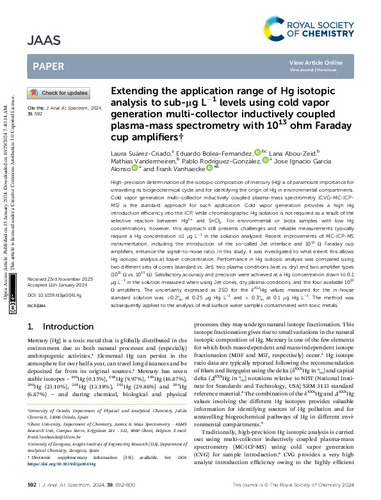Extending the application range of hg isotopic analysis to sub-μg l−1 levels using cold vapor generation multi-collector inductively coupled plasma-mass spectrometry with 1013 ohm faraday cup amplifiers
Fecha de publicación:
2024
Versión del editor:
Citación:
Suárez-Criado, L., Bolea-Fernandez, E., Abou-Zeid, L., Vandermeiren, M., Rodríguez-González, P., García Alonso, J. I., & Vanhaecke, F. (2024). Extending the application range of Hg isotopic analysis to sub-μg L−1 levels using cold vapor generation multi-collector inductively coupled plasma-mass spectrometry with 1013 ohm Faraday cup amplifiers. Journal of Analytical Atomic Spectrometry, 39(5), 592–600.
Descripción física:
p. 592-600
ISSN:
DOI:
Colecciones
- Artículos [36307]
- Química Física y Analítica [606]
Ficheros en el ítem





